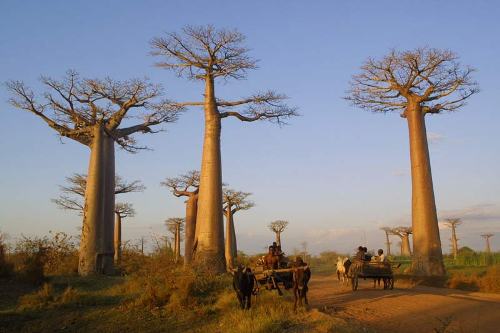8 Facts about Baobab Trees
If you are interested to know one of the oddest and oldest trees in the world, check Facts about Baobab Trees. This deciduous tree can be seen living for more than thousands of years. It has the bottle shaped trunk with massive structure. The tree can grow well in semi tropical and tropical climates. It is native to several regions such as Australia, Africa and Madagascar. This tree is not able to live in the region with freezing climate. Here are some interesting facts about baobab tree.
Facts about Baobab Trees 1: the scientific name
Baobab tree has the scientific name of Adansonia digitata. As I have stated before, it can be found in Madagascar, Africa and Australia. The tree can live well in the hot and dry regions. Find out facts about banana tree here.
Facts about Baobab Trees 2: the size
Let’s find out the size of baobab tree. It has the trunk with the diameter at 35 to 60 feet. The length of the tree is around 40 to 75 feet.
Facts about Baobab Trees 3: age
Baobab tree can live longer. When the experts do a research on radiocarbon, the age of tree is around 2,000 years old.
Facts about Baobab Trees 4: the flowers
The flowers of baobab tree can be seen when the tree is 20 years old. The stamens are in purple color. The fruit bats and insects are attracted on the tree for it releases the strong and musky odor at night. The fruit is hairy and in gray color. It reminds you with the shape of hanging rats. The seeds can be seen in the pods.
Facts about Baobab Trees 5: “The Lion King”
“The Lion King” is the movie of Walt Disney. If you watch the movie, the baobab tree is featured in it. In Africa, the tree is included as a sacred tree of life. Get facts about avocados here.
Facts about Baobab Trees 6: a home
The trunk of baobab tree is very thick. It often features some hollows. There is no need to wonder that many animals live in the tree such as spiders, scorpions, snakes, tree frogs, squirrels, lizards, birds, insects and snakes.
Facts about Baobab Trees 7: the usage of baobab tree
In Africa, the parts of baobab trees are used. The African people create the lemonade like drink from the pulp of baobab tree. To create red dye, the roots will be cooked. The people can create musical instrument string or even clothing from the inner bark of the baobab tree.
Facts about Baobab Trees 8: the species
Some species of baobab trees include Adansonia grandidieri Baill, Adansonia digitata L, Adansonia perrieri Capuron, Adansonia kilima, and Adansonia za Baill.
Are you interested reading facts about baobab trees?








